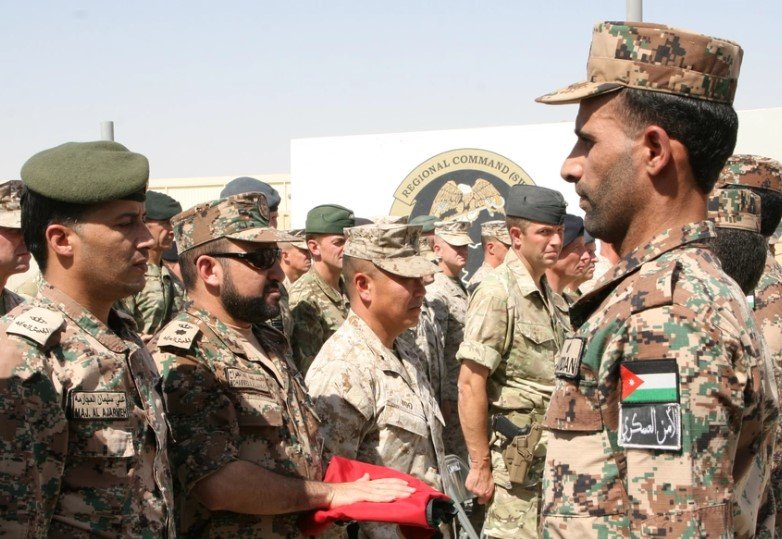Jordanian forces successfully foiled two drug smuggling attempts using balloons on the eastern border with Syria early on September 1, 2025. The Eastern Military Zone units detected and shot down the narcotics-laden balloons, seizing large quantities of drugs and highlighting ongoing efforts to combat cross-border trafficking.
Details of the Latest Smuggling Attempts
The Jordanian Armed Forces announced that border guards intercepted two balloons carrying significant amounts of narcotics at dawn. These balloons, equipped with basic guidance systems, originated from southern Syria and were brought down inside Jordanian territory.
This incident follows a similar event just days earlier on August 24, when forces prevented another infiltration and smuggling operation on the northeastern border. Officials reported no injuries during the operations, and the seized drugs included thousands of Captagon pills, a stimulant widely produced in the region.
Security teams worked closely with anti-narcotics departments to track and neutralize the threats. The quick response underscores the vigilance of Jordan’s military in protecting its borders from such creative smuggling tactics.
Rising Use of Aerial Methods in Drug Trafficking
Smugglers have increasingly turned to low-tech aerial devices like balloons and drones to evade ground patrols. These methods allow them to transport drugs over borders without direct confrontation.

In recent months, balloons fitted with rudimentary navigation have become a common tool, often launched from areas like Suwayda in Syria. Experts note that this shift reflects adaptations to stricter border controls.
Drones have also been used in past attempts, carrying payloads of Captagon, crystal meth, and other substances. The simplicity of these devices makes them hard to detect but also vulnerable to advanced radar systems.
This trend points to organized networks exploiting regional instability to flood markets with illegal drugs.
Here are some key smuggling methods observed recently:
- Balloons with basic GPS for short-distance flights.
- Drones loaded with hidden compartments for narcotics.
- Ground infiltrations supported by armed groups.
Jordan’s Ongoing Border Security Operations
Jordan has ramped up its military presence along the eastern border to counter these threats. The army conducts regular patrols and coordinates with intelligence agencies to monitor suspicious activities.
In 2025 alone, forces have thwarted over a dozen smuggling attempts, resulting in the seizure of millions of Captagon pills and other drugs. These operations often involve direct engagements, leading to arrests and occasional clashes.
International cooperation plays a role, with Jordan sharing intelligence with neighboring countries to disrupt supply chains. Training programs for border guards focus on new technologies to spot aerial threats.
The government has invested in advanced surveillance equipment, including radar and thermal imaging, to stay ahead of evolving tactics.
The Broader Impact of the Captagon Trade
The drug trade, particularly Captagon, fuels conflict and instability in the Middle East. Produced mainly in Syria, it generates billions in revenue for armed groups and regimes.
Jordan serves as a key transit point for these drugs heading to Gulf states and beyond. The smuggling not only poses security risks but also contributes to public health crises in affected countries.
Efforts to curb this trade have led to diplomatic talks between Jordan and Syria, aiming to address root causes like economic desperation in border regions.
Recent data shows a decline in successful smuggling due to heightened vigilance, but challenges remain amid ongoing regional tensions.
| Month in 2025 | Number of Foiled Attempts | Types of Drugs Seized | Estimated Value (USD) |
|---|---|---|---|
| July | 5 | Captagon, Hashish | 2 million |
| August | 7 | Captagon, Crystal Meth | 3.5 million |
| September | 2 (so far) | Captagon | 1 million |
Challenges and Future Strategies
Despite successes, Jordan faces hurdles like porous borders and sophisticated smuggling networks. Smugglers often link to larger syndicates with ties to militias in Syria.
Experts suggest that long-term solutions require economic development in border areas to reduce incentives for trafficking. Jordan has called for more international aid to bolster its defenses.
Looking ahead, officials plan to enhance drone interception capabilities and expand joint operations with allies. These steps aim to further reduce smuggling incidents.
The persistent threat highlights the need for regional cooperation to dismantle production hubs and supply lines.
What do you think about Jordan’s border security efforts? Share your thoughts in the comments below and spread the word by sharing this article with others interested in regional news.
